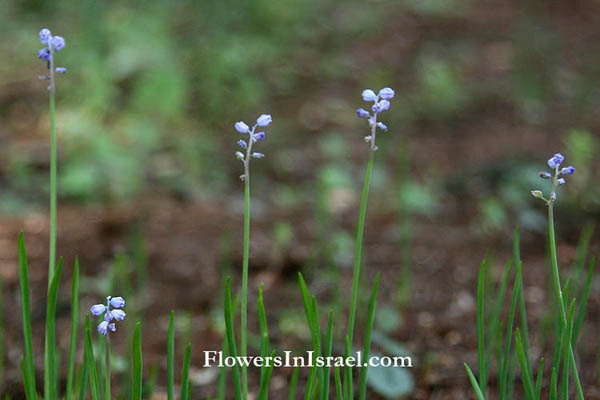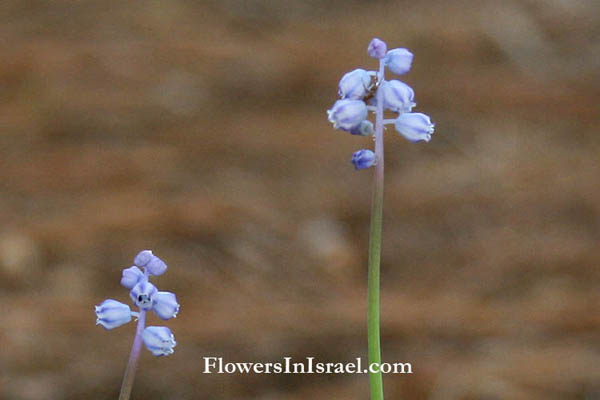Autumn Grape Hyacinth, Lesser Grape Hyacinth,
Hebrew: כדן קטן-פרחים
| Scientific name: | Muscari parviflorum Desf. | |
| Synonym name: | Hyacinthus parviflorus (Desf.) Pers., Bothryanthus parviflorus (Desf.) Kunth | |
| Common name: | Autumn Grape Hyacinth, Lesser Grape Hyacinth | |
| Hebrew name: | כדן קטן-פרחים | |
| Family: | Liliaceae, שושניים |

Location: Ramat Hanadiv |
| Life form: | Geophyte | |
| Stems: | 6-11 cm high | |
| Leaves: | All basal, narrowly linear or filiform, entire | |
| Inflorescence: | Raceme very lax, cylindrical | |
| Flowers: | Lilach, dark blue; tube of mature fertile flowers pale blue to dark blue; perianth pale blue; teeth paler, with a median darker blue stripe, recurved; pedicels ascending | |
| Fruits / pods: | Capsule with sharply angled valves | |
| Flowering Period: | September, October, November | |
| Habitat: | Batha, Phrygana | |
| Distribution: | The Mediterranean Woodlands and Shrublands | |
| Chorotype: | Mediterranean | |
| Summer shedding: | Ephemeral |

Location: Ramat Hanadiv Derivation of the botanical name: Muscari, grape-hyacint; Greek moschus, musk; an allusion to the sweet scent of some species. Umberto Quattrocchi says: A Turkish name recorded by Clusius in 1583. Latin muscus, i "moss, musk." parviflorum, Greek parvus, small; flora, flower; small-flowered. Hyacinthus, named for Hyakinthios, a young prince of Sparta, loved by Apollo, who died after being struck on the head by a discus. The hyacinth flower sprouted where his blood fell. autumnalis, pertaining to autumn. Bothryanthus, botrys βοτρυϛ, grape; anthos, a flower; grape flower. The Hebrew name: כדן, kadan, hyacinth.
|